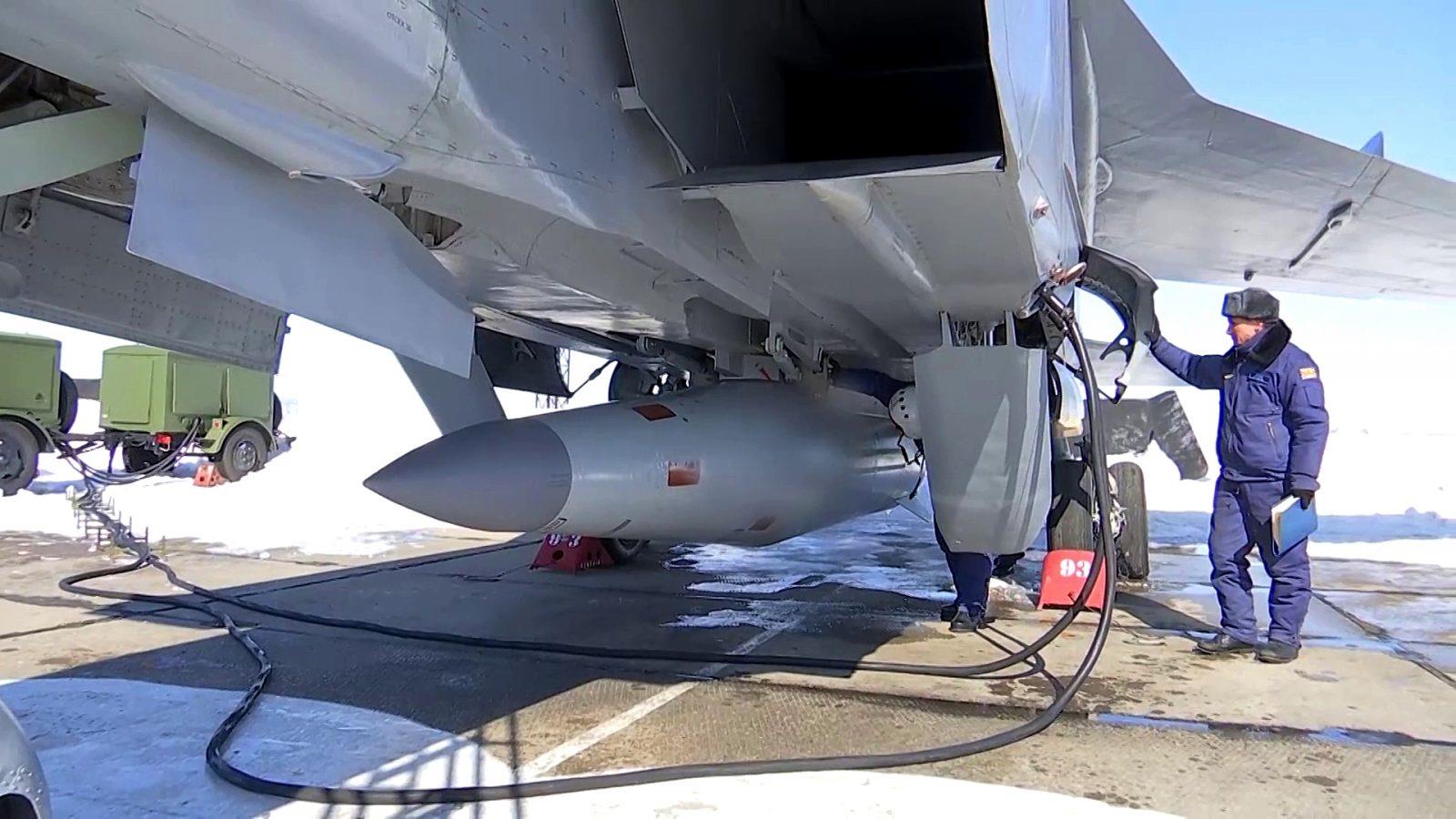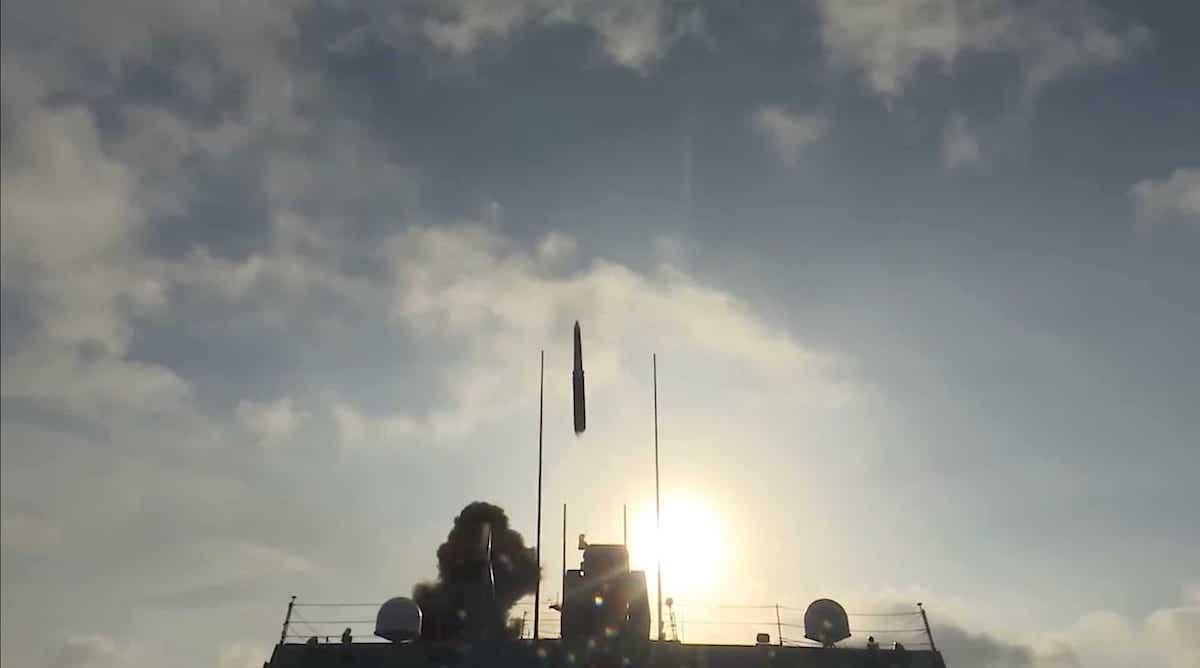(MENAFN- Asia Times) China's Xian H-6K strategic bomber has been spotted carrying a new type of air-launched ballistic missile (ALBM), emphasizing its anti-access/area denial (A2/AD), carrier-killer and standoff strike capabilities against US bases and forces in the Pacific.
that H-6K, serial 11097, was seen with a pair of new underwing missiles possibly derived from the hypersonic CM-401, a truck or ship-launched anti-ship ballistic missile (ASBM) with land-attack capabilities that was first launched in 2018.
The report noted that the new ALBMs combine the CM-401's formidable combat characteristics with the increased standoff range of the H-6K.
, the CM-401 is a new type of hypersonic ballistic missile that it claims can travel up to Mach 6 at up to 290 kilometers, can be launched into a near-space trajectory and maneuver at hypersonic speeds.
Upon reaching its target, the CM-401 can perform a terminal diving attack wherein the missile abruptly pulls up upon starting the terminal phase of its flight.
As noted by Thomas Newdick in The Warzone, the maneuver makes defense against it more difficult, allows for course adjustments and can extend its range in some cases. Newdick also notes that an H6-K air launch can significantly increase the CM-401's range and terminal performance, with the H6-K adding 3,500 kilometers or even more with aerial refueling.
China's new ALBM may take design cues from Russia's Kinzhal ALBM, judging by their similar characteristics. Previously, Russia has used air-launched hypersonic weapons in the ongoing Ukraine war against static ground targets, becoming the first nation to use such weapons in conflict.
This March, the its use of the Kinzhal against Ukrainian targets, hypersonic attacks which were Newdick notes that the Kinzhal also has anti-ship capabilities, though these are still unproven.

A Russian Kinzhal hypersonic missile in a file photo. Photo: AFP / Ministry of Defense of the Russian Federation
The US also deploys air-launched missiles from its strategic bombers but has a different approach to overcoming enemy air defenses. While China and Russia's missiles rely on speed to penetrate enemy air defenses, the US relies on stealth.
that the US is upgrading its B2 bombers to fire the stealthy Joint Air-to-Surface Standoff Missile-Extended Range (JASSM-ER) cruise missile, with its small size allowing the missile to remain undetected until the last two or three kilometers of flight, which at that point is too late for interception.
China's new ALBM, if installed aboard its H6-K bombers, could attack US military installations in Guam and Wake Island as well as major surface warships including aircraft carriers and amphibious warfare ships.
showing a Xian H-6K bomber launching a missile at an enemy military base that appeared to simulate the Anderson Air Base at Guam.
China has been diversifying its hypersonic weapon launch platforms to include ship and road-mobile launchers as part of an asymmetric strategy against the US and its allies in the Pacific.
China's hypersonic weapons aim to deter adversaries, namely the US, with their ability to penetrate modern air defenses without requiring air superiority , an online journal of the US Air University.
in April on China's successful YJ-21 hypersonic anti-ship“carrier killer” ballistic missile test from one of its Type 55 cruisers. indicated that the YJ-21 is a cold-launched missile tipped with a hypersonic glide vehicle (HGV), with its small control surfaces suggesting it is not a surface-to-air missile.
Combining a 1,500-kilometer range, large warhead and high velocity, the YJ-21 is designed to punch through the decks of an aircraft carrier, sinking it outright.
Significantly, the YJ-21's range is greater than the US F-35C, the US Navy's latest carrier-borne fighter, meaning that US carrier battlegroups will have to sail closer so the F-35Cs can reach their targets, putting the former vessels at risk of attack, .

China's YJ-21 hypersonic missile in a test launch. Image: Video Screengrab
With China's successful test of a ship-borne hypersonic weapon, the US appears to lag in this potentially crucial strategic dimension. that the US plans to arm three of its advanced Zumwalt-class destroyers with hypersonic missiles by 2025, replacing their massive twin 155mm Advanced Gun Systems (AGS).
This change will convert the futuristic warships into blue-water strike vessels from their original role as stealthy shore bombardment platforms.
China also has a substantial land-based hypersonic weapons arsenal, which includes the DF-17 road-mobile medium-range hypersonic missile, whose existence was first confirmed in 2014,
Missile Threat notes that the DF-17 has an estimated range of 1,800 to 2,500 kilometers and can be equipped with conventional or nuclear warheads. It also notes that the DF-17 has a high degree of accuracy and that test flights in 2015 showed it can perform extreme maneuvers and evasive actions. The same source said that, as of 2019, China was working to develop an anti-ship variant of the DF-17.
China used the DF-17 in its extensive missile firing and naval drills off Taiwan in response to US House Speaker Nancy Pelosi's controversial visit to the self-governing island this August,






















Comments
No comment